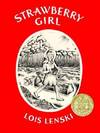
Study of Nuclear Structure by Electromagnetic Excitation with Accelerated Ions in Reviews of Modern Physics 28, 4, October, 1956, pp. 432-542
by Alder, Kurt; Bohr, Aage; Huss, T; Mottelson, Ben; Winther, Aage
- Used
- Paperback
- Condition
- See description
- Seller
-
West Branch, Iowa, United States
Payment Methods Accepted
About This Item
FIRST EDITION IN ORIGINAL PRINTED WRAPS OF A "LANDMARK REVIEW" & "DEFINITIVE THEORY" OF COULOMB EXCITATION & ONE OF THE 100 MOST CITED PAPERS TO APPEAR IN THE JOURNAL REVIEWS OF MODERN PHYSICS(Cline, "Nuclear Shapes", Ann. Rev. Nucl. Part, 1986, 684; History of Physics: The Wenner Collection). Though the origin of the theory of Coulomb excitation can be traced back to a 1913 paper by Bohr on atomic Coulomb excitation,"the theoretical foundation of [it] was summarized in the 1956 landmark review paper [this paper] by the Copenhagen group" (Cline, "Nuclear Shapes", Ann. Rev. Nucl. Part, 1986, 684).
The Copenhagen group consisted of Alder, Bohr, Huss, Mottelson, and Winther. Their paper is "famous" as both an important study and a classic review of Coulomb excitation. (Hamilton, Electromagnetic Excitation, Physics Bulletin, 27, 6). They investigated the issue "both experimentally and theoretically"; the result is a very detailed study now considered the "definitive theory of Coulomb excitation.
Often considered one of the best tools for the investigation of nuclear properties, Coulomb excitation is "Nuclear excitation caused by the time-dependent electromagnetic field acting between colliding atomic nuclei" (Cline, 683). More specifically, it refers to the vibration and rotation of nuclei caused when they are disturbed by charged particles that come close enough to the nucleus to allow Coulomb forces to come into play (called the "Coulomb radius") but [not close enough to] impact the nucleus" (History of Physics: The Wenner Collection). CONDITION & DETAILS: Lancaster: American Physical Society. Volume 28, Number 4, October, 1956. Original printed wraps. (10.5 x 8 inches; 263 x 200mm). This is not an ex-institutional copy. Single ownership stamps of the physicist William Primak on the front wrap. Very slight wear at the edges of the wraps. Near fine condition inside and out.
The Copenhagen group consisted of Alder, Bohr, Huss, Mottelson, and Winther. Their paper is "famous" as both an important study and a classic review of Coulomb excitation. (Hamilton, Electromagnetic Excitation, Physics Bulletin, 27, 6). They investigated the issue "both experimentally and theoretically"; the result is a very detailed study now considered the "definitive theory of Coulomb excitation.
Often considered one of the best tools for the investigation of nuclear properties, Coulomb excitation is "Nuclear excitation caused by the time-dependent electromagnetic field acting between colliding atomic nuclei" (Cline, 683). More specifically, it refers to the vibration and rotation of nuclei caused when they are disturbed by charged particles that come close enough to the nucleus to allow Coulomb forces to come into play (called the "Coulomb radius") but [not close enough to] impact the nucleus" (History of Physics: The Wenner Collection). CONDITION & DETAILS: Lancaster: American Physical Society. Volume 28, Number 4, October, 1956. Original printed wraps. (10.5 x 8 inches; 263 x 200mm). This is not an ex-institutional copy. Single ownership stamps of the physicist William Primak on the front wrap. Very slight wear at the edges of the wraps. Near fine condition inside and out.
Reviews
(Log in or Create an Account first!)
Details
- Bookseller
- Atticus Rare Books
(US)
- Bookseller's Inventory #
- 958
- Title
- Study of Nuclear Structure by Electromagnetic Excitation with Accelerated Ions in Reviews of Modern Physics 28, 4, October, 1956, pp. 432-542
- Author
- Alder, Kurt; Bohr, Aage; Huss, T; Mottelson, Ben; Winther, Aage
- Book Condition
- Used
- Quantity Available
- 1
- Binding
- Paperback
Terms of Sale
Atticus Rare Books
30 day return guarantee, with full refund including shipping costs for up to 30 days after delivery if an item arrives misdescribed or damaged.
About the Seller
Atticus Rare Books
Biblio member since 2010
West Branch, Iowa
About Atticus Rare Books
We specialize in rare and unusual antiquarian books in the sciences and the history of science. Additionally, we specialize in 20th century physics, mathematics, and astronomy.
Glossary
Some terminology that may be used in this description includes:
- Edges
- The collective of the top, fore and bottom edges of the text block of the book, being that part of the edges of the pages of a...
- A.N.
- The book is pristine and free of any defects, in the same condition as ...
- Fine
- A book in fine condition exhibits no flaws. A fine condition book closely approaches As New condition, but may lack the...

